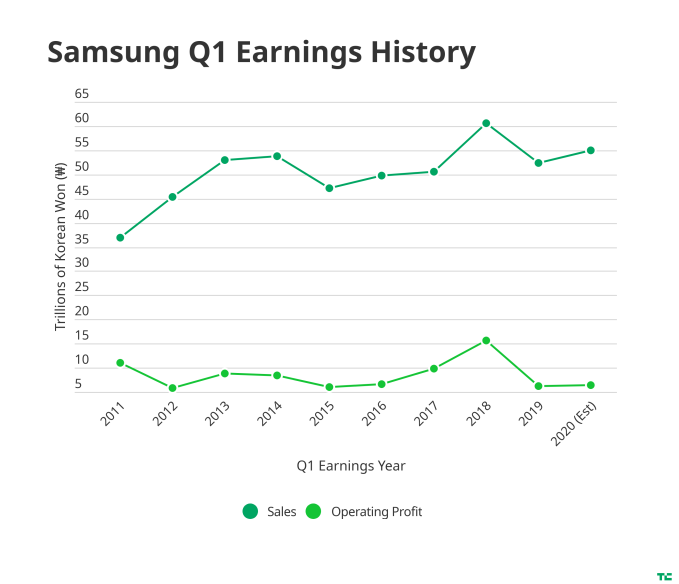Samsung earnings guidance stays upbeat despite global macro crisis
Samsung overnight released its earnings guidance for the first quarter of 2020, stating that it expected sales of $45.4 billion and an operating profit of roughly $5.3 billion. The company's fiscal year is aligned to the standard calendar year, and it will announce official earnings results on April 23.
Those numbers are slightly up from last year's first quarter, which had sales of $43.3 billion and an operating profit of roughly $5.1 billion.

Those sales and profits are in line with Samsung's historical first quarter earnings, which have been relatively stagnant over the past few years with the minor exception of 2018, which saw a bump to both revenues and profits.
Samsung recognizes four main segments: consumer electronics (19.2% of sales and includes smart devices like TVs), IT & Mobile (51.9%, and includes key flagship products like the Galaxy line of smartphones), Device Solutions (39.4%, which includes display components, memory, and semiconductors), and Harman (4.2%, which includes audio and connected car technology), which it acquired in 2016 for $8 billion.
Samsung had been on a tear until the crisis around COVID-19. From August last year to February this year, the company's stock soared roughly 50% on encouraging electronics news in the smartphone, DRAM, and components businesses, only to sink about 15% in the increasingly dire global macro environment.
South Korea was among the first countries to institute wide-scale responses to the advent of the novel coronavirus, which has affected everything from manufacturing to logistics to transoceanic shipping. Most of Samsung's first quarter coincides with these initiatives, perhaps indicating that the economic damage from the global pandemic may be somewhat limited.
Nonetheless, demand for products in the company's key profit centers is likely to be soft as consumers cut back on spending this year given the massive global recession underway. The company must also navigate the intensifying trade war between the U.S. and China, two of its largest export markets.